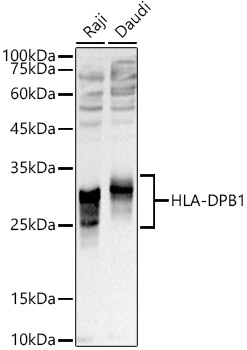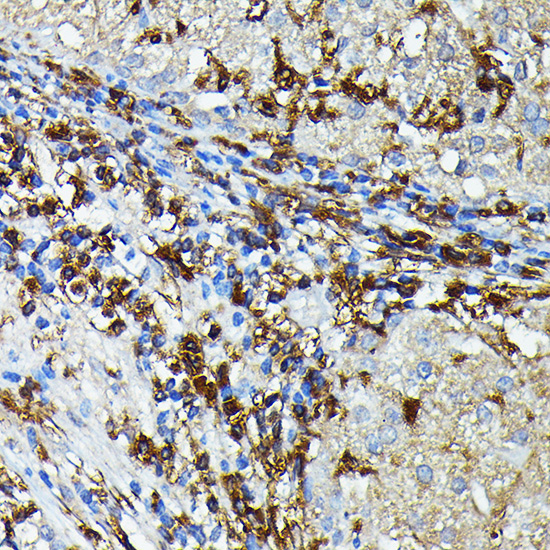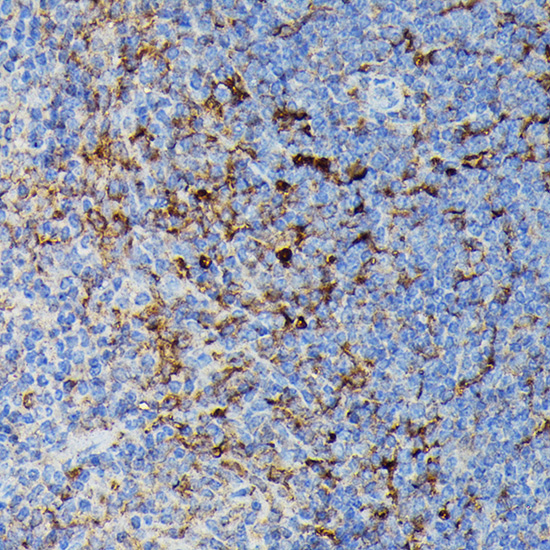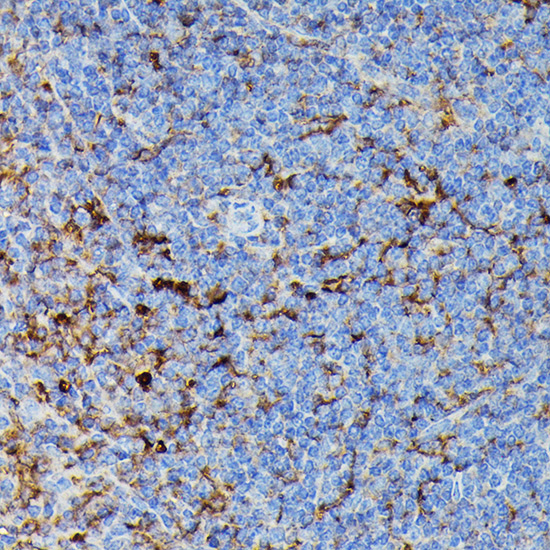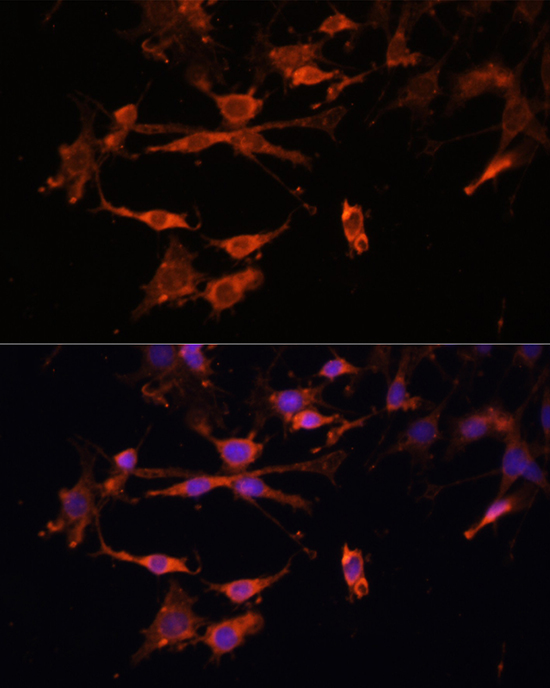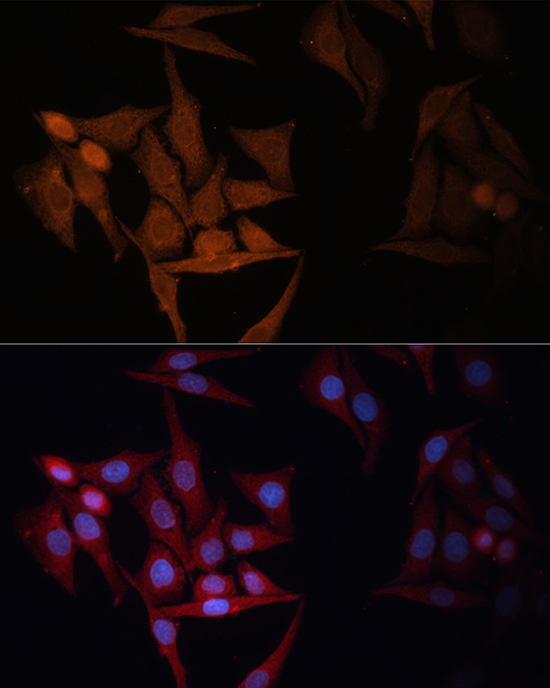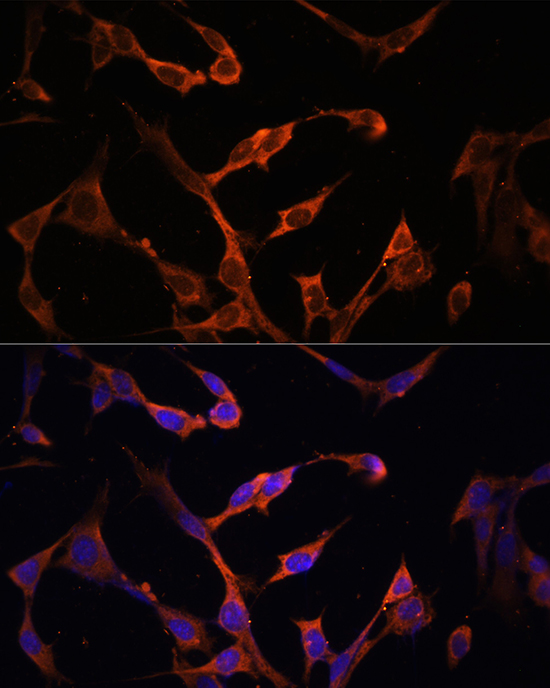HLA-DPB1 Polyclonal Antibody
For reference only. Please follow the manual included in your kit for instructions.
Catalog Number
Product Name
HLA-DPB1 Polyclonal Antibody
Catalog Number
RD90218A
Clonality
Polyclonal
Purification Method
Affinity purification
Isotype
IgG
Host
Rabbit
Background
HLA-DPB belongs to the HLA class II beta chain paralogues. This class II molecule is a heterodimer consisting of an alpha (DPA) and a beta chain (DPB), both anchored in the membrane. It plays a central role in the immune system by presenting peptides derived from extracellular proteins. Class II molecules are expressed in antigen presenting cells (APC: B lymphocytes, dendritic cells, macrophages). The beta chain is approximately 26-28 kDa and its gene contains 6 exons. Exon one encodes the leader peptide, exons 2 and 3 encode the two extracellular domains, exon 4 encodes the transmembrane domain and exon 5 encodes the cytoplasmic tail. Within the DP molecule both the alpha chain and the beta chain contain the polymorphisms specifying the peptide binding specificities, resulting in up to 4 different molecules. [provided by RefSeq, Jul 2008]
Immunogen Information
Immunogen
A synthetic peptide of human HLA-DPB1
Gene ID
3115
Swissprot
P04440
Synonyms
DPB1HLA-DPHLA-DP1BHLA-DPBHLA-DPB1major histocompatibility complexclass IIDP beta 1
Calculated MW
20kDa
Observed MW
Refer to figures
Applications
Reactivity
Human,Mouse,Rat
Tested Applications
WB,IHC,IF
Conjugation
Unconjugated
Dilution
WB 1:500-1:2000,IHC 1:50-1:100,IF 1:50-1:200
Concentration
1mg/mL
Storage Buffer
PBS with 0.01% thiomersal,50% glycerol,pH7.3.
Storage Instructions
Store at -20°C Valid for 12 months. Avoid freeze / thaw cycles.
